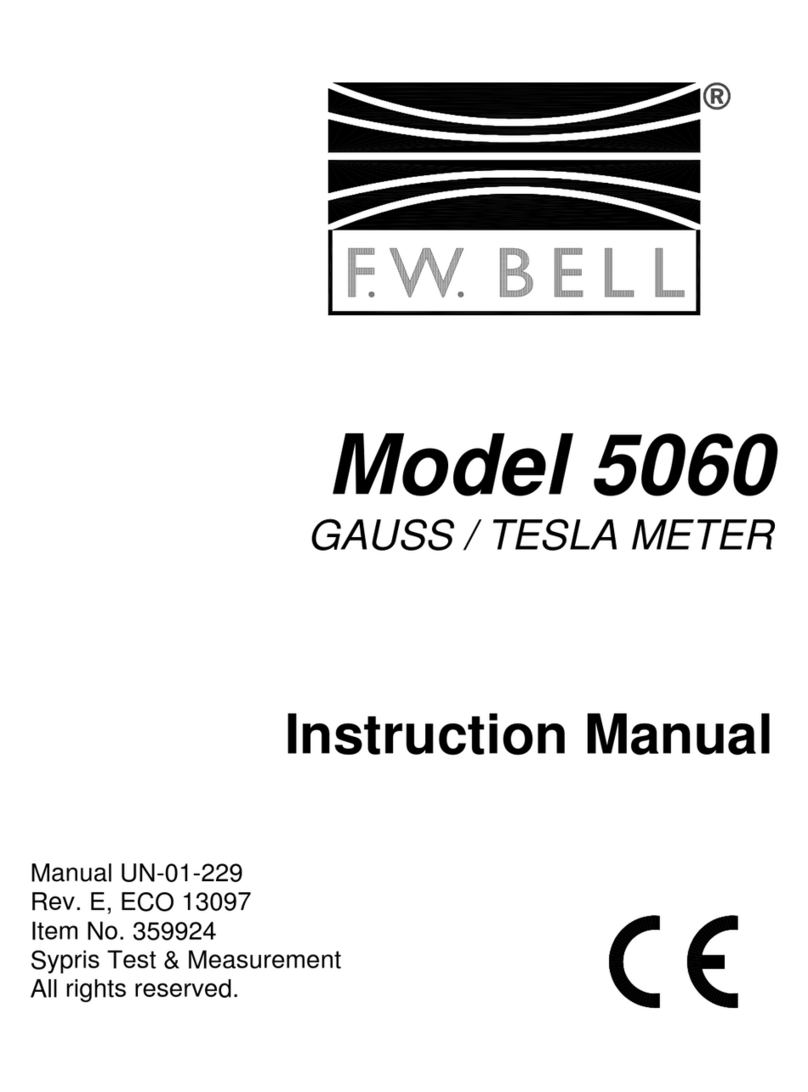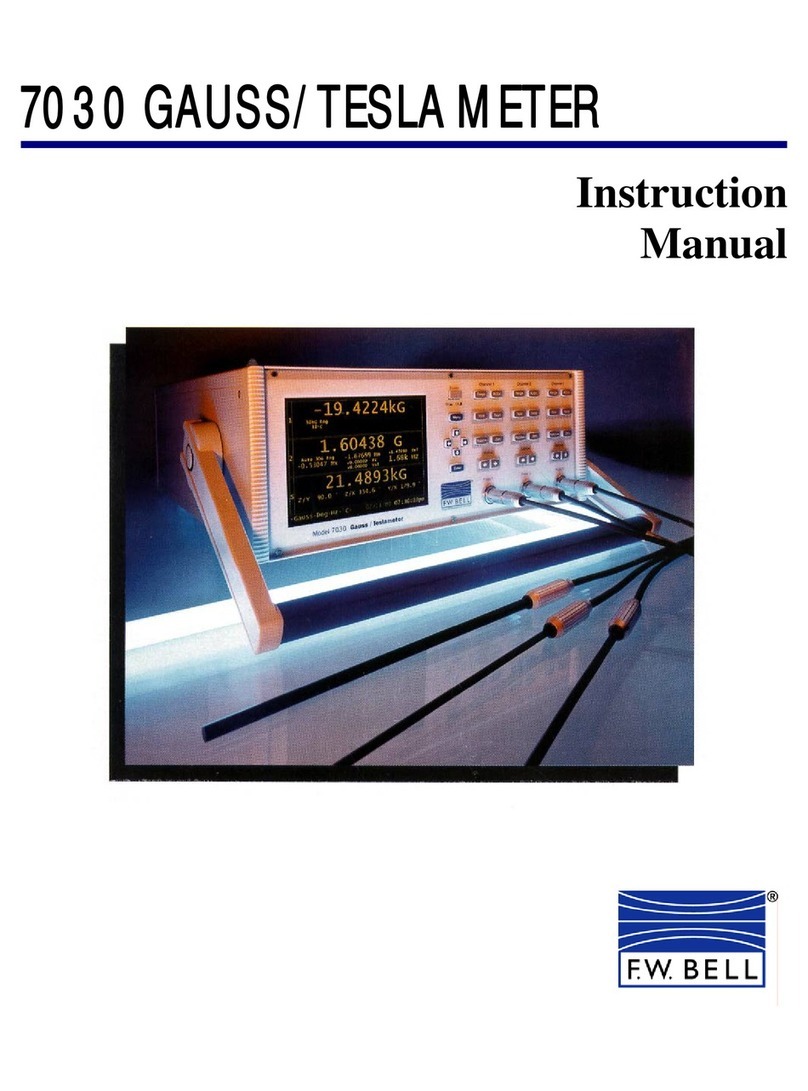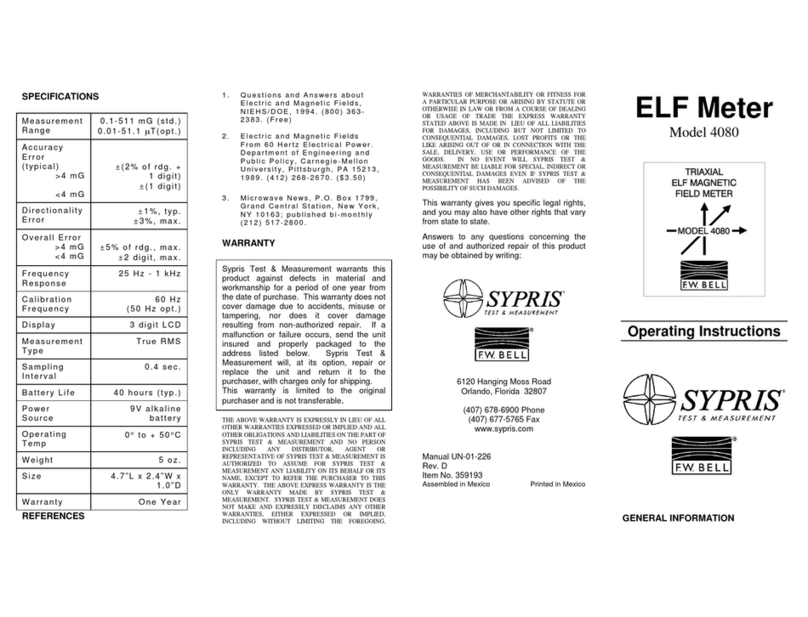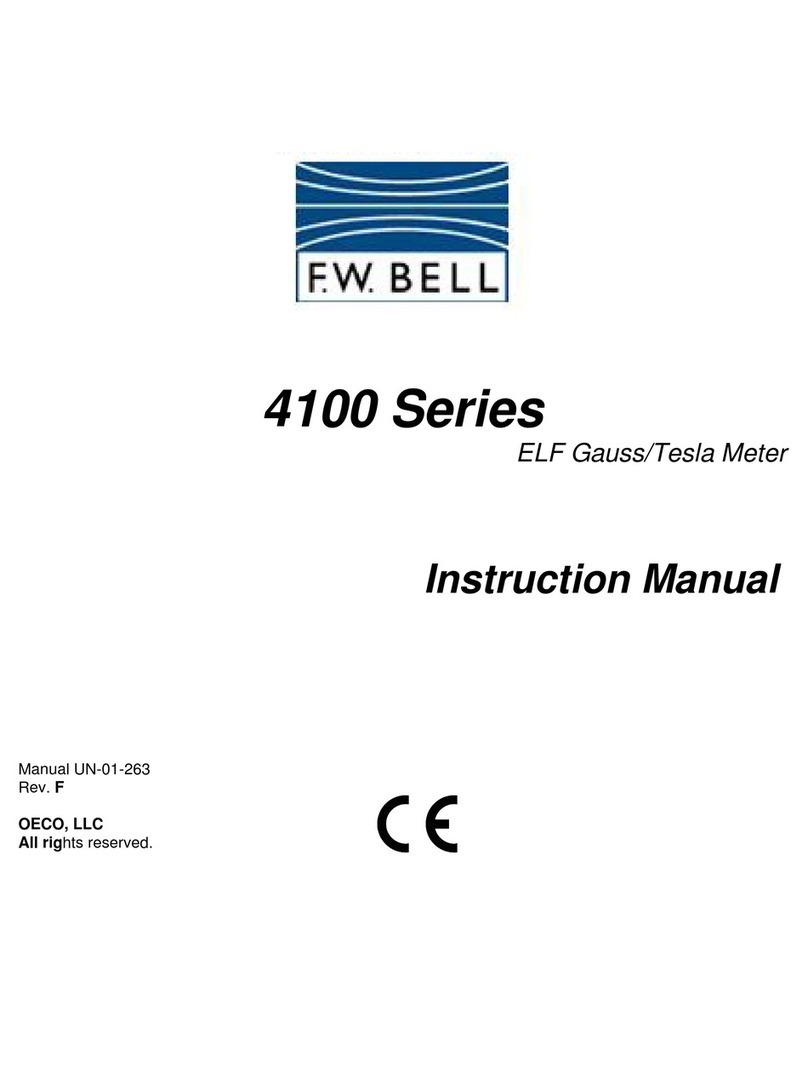
Compliance was demonstrated to the following specifications as listed in the
official Journal of the European Communities:
EN 61326-1:2021 Electrical equipment for measurement, control
and laboratory use EMC requirements
CISPR 11:2015+A1:2016+A2:2019
IEC 61000-3-3:2013+A1:2017
IEC 61000-4-5:2014+A1:2017
IEC 61000-4-11:2004+A1:2017
Communications Port:
Format: Universal Serial Bus
Connector type:USB-C 2.0
Standards supported: IEEE-1987.2, SCPI-1991
Lines supported: Transmit, receive, common
Cable length: 3 m (9.8 ft.) maximum
SPECIFICATIONS, MODEL 5270 & 5280 GAUSS / TESLAMETER without probe, 23 ±3ºC, RH <85%
Battery Type:One Rechargeable 21700 Li-ion with 4000 mAH
Battery Life: 8 to 15 hours (brightness dependent)
Battery Charging Time: 120+ minutes with 1 A charger
(quickest charging when OFF or with lowest brightness setting)
Battery Charging Port: USB-C 2.0
Drop Test: 1 Meter drop per IEC 61010-1:2010
Analog Output Connector: BNC
Operating Temperature: 0 to +45ºC (+32 to +113ºF) Charging
0 to +60ºC (+32 to +140ºF) Not Charging
Storage Temperature: -25 to +70ºC (-13 to +158ºF)
Meter Dimensions: Length: 20.3 cm (8.00 in)
Width: 9.8 cm (3.85 in)
Height: 4.8 cm (1.87 in)
Weight: Meter w/ battery: 443 g (15.6 oz.)
Shipping: 1.6 kg (3.6 lb)
Display: 4.3" TFT Resistive Touch LCD Panel, 480xRGBx272 Px
Probe accuracy must be added to meter accuracy to determine
overall accuracy
{2} additional ±8 mV tolerance for signals
< 4% of lowest range and >2 kHz
Mid & High Ranges:
AC MODE: (for sinewave >6 G or 0.6 mT) {2}
10 – 20 Hz
20 – 5000 Hz
Analog output -3dB point is approximately 22 kHz
Sample Rate: 8µs with variable moving average filtering
Risetime: DC Mode = 250 µs DC peak hold = 60 µs
AC Mode and AC Peak Hold; from 30 µs to 2 ms depending on freq.
2.50 + 5
Accuracy, Analog Output of Model 5270/5280 (±% of Reading ± mV)
{1} additional ±8 counts tolerance for signals
< 4% of lowest range and >2 kHz
DC MODE, Low Range: 1.25+ 4 0.8 + 4
Mid & High Ranges: 1.00 + 3 0.6 + 3
AC MODE (for sinewave >6G or 0.6mT) {1}
10 - 20 Hz 3.50 + 8 3.0 + 8
20 - 20,000 Hz: 2.50 + 5 2.0 + 5
20 kHz to 25 kHz (1x axial probe only) N/A 3.0 + 5
Warmup Time to Rated Accuracy:
Min / Max Hold Acquisition Time:
Peak Hold Acquisition Time:
Analog Output Scaling:
Analog Output Noise:
Analog Output Load:
DC mode: 100 ms typical
AC mode: 700 ms at 10 Hz
to 500 ms at 300 Hz
250 ms at 300 - 4000 Hz
100 ms > 4 kHz
DC or AC mode: 128 µs minimum
DC mode: ± 3 VDC
AC mode: 3 VRMS
(Hi- Range) 1.5 mVRMS
(Mid- Range) 4.5 mVRMS
(Low- Range) 15.5 mVRMS
10 kOhm min, 100 pF max.
Accuracy, ±% of Reading ± counts
Accuracy Change with Temperature (not including probe)
0-20ºC and 26-50ºC (typical)
Low Range: ±0.25% + 3.0 counts / ºC
Mid & High Ranges: ±0.02% + 0.2 counts / ºC


































